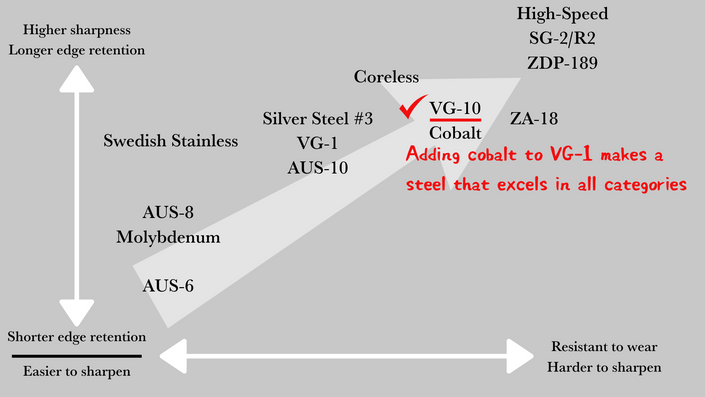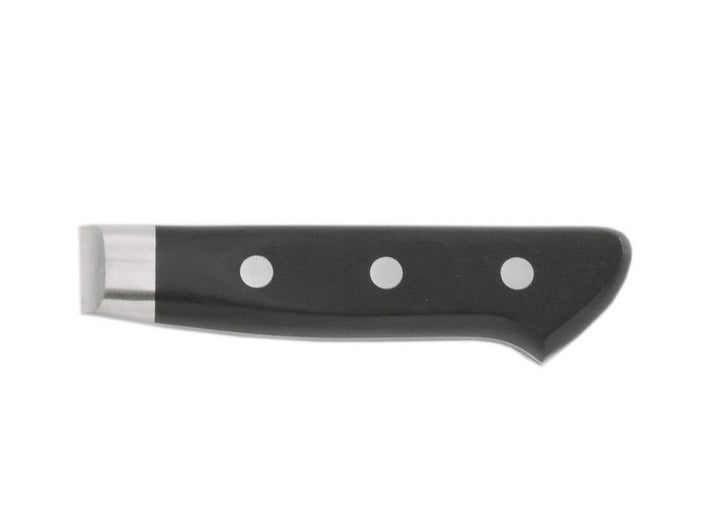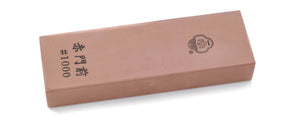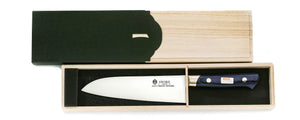
Zen Series
- Blade: VG-10 Stainless Steel; Sharp and long edge retention, easy to sharpen, rust resistant.
- Hammer Pattern
| Product number | Actual Blade Length (mm) | Full Length (mm) | Total Weight (g) |
|---|---|---|---|
| 2zp-130 | - | - | - |
| 2zp-150 | 150 | 265 | 75 |
| Blade | Material Name | Handle |
|---|---|---|

Double Edged |
VG-10 | Compressed plywood handle with brim |

Petty
Petty knife or Petit knife is ideal for detailed food preparation such as peeling, slicing and decorative work.The blade size can vary from 120mm to 150mm and is quite light in hand. Professional chefs often use the short 125mm blade for peeling and cutting. For home use, the 150mm size is popular.

VG-10
Adding cobalt to VG-1 stainless steel's composition increases its wear resistance and tenacity. The resulting VG-10 stainless steel is also easy to process, making it easy to create well-balanced kitchen knives.
Stainless Steel
VG-10 is one of the most popular stainless steels used in kitchen knives today and is made from carefully selected and high-purity raw materials with good machinability. VG-10 is both hard and tough, while staying easy to resharpen.This combination of factors gives the highly efficient VG-10 a strong advantage over other steels in its field.

Compressed Wood
This handle is made of a durable, compressed plywood, with a flange attached to improve balance. It's known for being very hygiene-friendly because water cannot easily get into the core wedged between the handle.

Clad
Clad knives are made from a steel plate that has a core steel sandwiched between soft iron. It is then shaped, hardened, and polished. This method is often used for knives focused on cost performance, as they are easier to remove distortions form and process.

Optional Engraving
Optional Engraving Service
Sakai Ichimonji provides complimentary engraving using either Japanese Kanji or English Alphabet. Please specify your preference. For details, please visit here
A knife store that has supported the history of knives and food culture in Japan.
It has been 600 years since the birth of swordmaking in the Sakai region of Japan. Sakai Ichimonji Mitsuhide's and it's craftsmen continue to build on that legacy by producing the finest blades in Japan.
This is where the culture of completing a dish of sashimi by "just cutting" and the culture of expressing sharpness as "taste" was born.
For 70 years, we have been connecting the spirit of Sakai's craftsmen with the passion of chefs in Osaka's kitchen equipment shopping district, known as the kitchen of Japan.
We are very happy that our knives can be used by people all over the world.

How to Choose a Japanese Kitchen Knife for Beginners
Japanese kitchen knives are famous for their design, history, and cutting performance. This guide will help you select the best knife for your needs.































